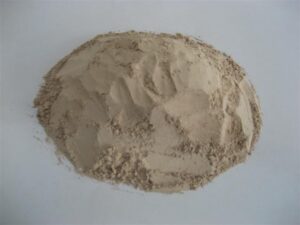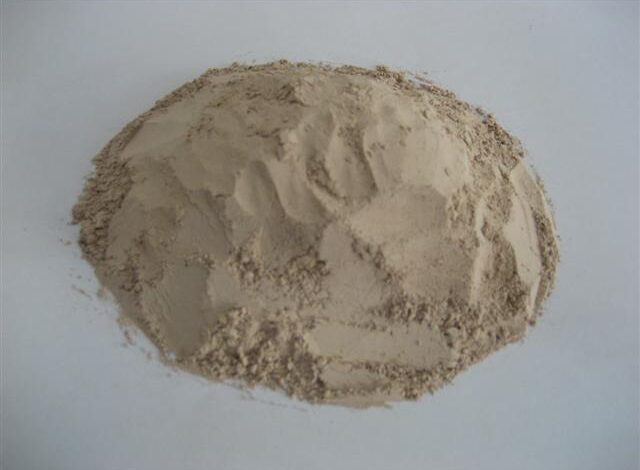Large Resources, Natural Formation, and Industrial Applications
Introduction to Barite
Barite (BaSO₄) is a naturally occurring mineral composed of barium sulfate. Because of its high specific gravity, chemical stability, and broad industrial uses, it holds a vital place in global markets. The mineral plays an important role in industries such as oil and gas, paints, plastics, and pharmaceuticals. Moreover, barite’s abundance and versatility make it a critical raw material in many economies.

Barite Resources
With significant global reserves, barite is a key component in drilling fluids for oil and gas exploration. Therefore, understanding where the largest deposits are located is crucial for anticipating future market trends. In this article, we examine the largest barite resources worldwide, how they form in nature, and their diverse industrial applications.
The Global Importance of Barite
Barite is a dense mineral that remains essential for industries ranging from energy to manufacturing. Thanks to its unique properties, it is widely used in drilling fluids, industrial fillers, and radiation shielding. Furthermore, several countries dominate global production, ensuring a steady supply for worldwide markets. As a result, barite has become a key driver in both industrial growth and international trade.
Top Countries with Large Barite Reserves
-
China – The Leading Producer
China ranks as the world’s largest producer and exporter of barite. Most reserves lie in Guizhou, Guangxi, and Hunan provinces. In addition, Chinese barite supports domestic demand while supplying international oil and gas sectors. -
India – Home to the World’s Largest Single Deposit
India holds the Mangampet deposit in Andhra Pradesh, the largest single barite deposit in the world. Consequently, the country is a major supplier to the Middle East, North America, and other markets requiring high-purity barite. -
United States – Key Reserves in Nevada
The U.S. possesses substantial deposits, particularly in Nevada and Georgia. On the other hand, nearly all U.S. production comes from Nevada, which primarily serves domestic oil drilling needs. -
Morocco – A Major Exporter to Europe and North America
Morocco maintains large reserves in the Middle Atlas region. As a result, its high-quality barite exports strengthen supply chains for industries in Europe and North America. -
Iran – Rich Reserves in the Middle East
Iran’s deposits, located in Kerman, Lorestan, and Hormozgan, are increasingly important as regional oil and gas activities grow. Moreover, strategic investment in mining infrastructure is expanding its export capabilities.
Why Large Barite Resources Matter
-
Essential for Oil and Gas Exploration
Over 75% of global barite output goes into drilling fluids for oil and gas wells. Therefore, countries with large reserves help secure stable energy operations. -
Growth in Industrial Applications
In addition to energy use, barite serves industries such as paints, plastics, and medical imaging. This means expanding reserves allow these sectors to meet rising demand. -
Global Trade and Economic Impact
Major producers benefit from strong exports, which in turn boost national economies and international trade relationships. In fact, barite exports can become a strategic economic advantage.
How Barite Forms in Nature
Barite develops in different geological environments, and three main types of deposits exist:
-
Hydrothermal Vein Deposits
These form when hot, mineral-rich fluids flow through fractures in the Earth’s crust. As the fluids cool, barite crystallizes—often alongside lead, zinc, and silver ores. -
Sedimentary Deposits
Extensive bedded deposits emerge when barium-rich fluids seep into porous rocks and react with sulfate-rich waters. This process is especially common in marine settings, where vast deposits can accumulate over millions of years. -
Residual Deposits
In some regions, barite accumulates as lighter surrounding materials erode away, leaving concentrated layers in soil or sediment. Consequently, these deposits are often easier to mine.
Industrial and Commercial Uses of Barite
Barite’s high density, inertness, and safety make it indispensable for several applications:
-
Oil and Gas Drilling
It weighs down drilling muds, preventing blowouts and stabilizing wellbores. As a result, safe and efficient drilling becomes possible even at great depths. -
Paint and Coating Industry
Barite enhances brightness, smoothness, and chemical resistance in paints used in automotive, marine, and industrial sectors. Moreover, it improves coating durability. -
Plastics and Rubber
It acts as a reinforcing filler, improving durability, UV resistance, and dimensional stability in plastic and rubber products. In turn, manufacturers can produce longer-lasting goods. -
Pharmaceutical Industry
Barium sulfate serves as a non-toxic, X-ray–opaque contrast medium for medical imaging of the digestive tract. In this way, doctors can visualize internal organs with greater clarity. -
Glass and Ceramics
When added to glass or ceramic formulations, barite improves strength, transparency, and heat resistance. Additionally, it helps prevent chemical corrosion. -
Radiation Shielding
Its density makes it valuable in shielding concrete for hospitals, nuclear facilities, and laboratories. Therefore, it plays an important role in public safety. -
Chemical Industry
Barite is a precursor for barium-based chemicals used in electronics, water treatment, and manufacturing. As such, it supports a wide range of downstream industries.
Environmental Considerations and Sustainability
To balance economic benefit with environmental responsibility, barite producers increasingly adopt sustainable practices. For example, reclamation plans reduce land disturbance, while improved waste management prevents contamination. In addition, research into recycling barite from drilling waste offers ways to conserve resources.
Future Trends in the Barite Industry
The global barite market is set for steady growth:
-
Expanding oil and gas projects will keep drilling-grade barite in high demand.
-
The paint and coatings industry will benefit from construction and automotive growth, therefore increasing barite consumption.
-
Rising use of radiation shielding in medical and nuclear fields will create new opportunities.
-
Technological advances in mining and processing will make production more efficient and environmentally friendly.
Demanded Type of Barite in Industry

